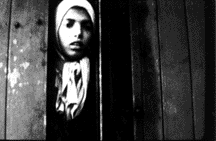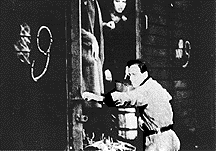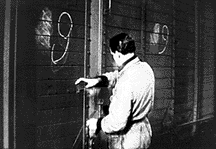Westerbork Concentration Camp
Westerbork was the main transit camp used by the Germans during their occupation of Holland to send people--mostly Jews--to the death camps in Poland. The second, smaller, concentration camp in Holland was Vught. Between July 1942, and September 1943, approximately 110,00 Jewish people passed through the two camps.
Westerbork was located near Assen, in northeastern Holland (see
map
). It was actually set up by the Dutch government before the Nazi invasion, as a refugee camp for Jews fleeing persecution in Germany. After the Nazi takeover, the Germans employed the German Jewish refugees to run their camp in an orderly, efficient manner. Every Monday evening a list of the week's 1,020 deportees was announced to the inmates in their sealed barracks. The next morning the trains carrying them to Auschwitz or Sobibor death camps in Poland left Westerbork promptly at 11 AM.

Fourteen year old Settela Steinbach being deported from Westerbork Concentration Camp. The train door is closed by Hans Margules, a German Jewish refugee forced to work to keep the Jews at Westerbork orderly and calm. Settela, who was a gypsy, was killed shortly after arriving at Auschwitz in August, 1944.


The photographs are from Herinneringscentrum Kamp Westerbork, Hooghalen, The Netherlands.
Camp Westerbork was used immediately after the war to intern Dutch collaborators, then, from about 1950 until 1970, as a relocation camp for dislocated people returning from the former Dutch colonies. In the early 1970's the camp was completely demolished and turned into a World War Two Memorial.


